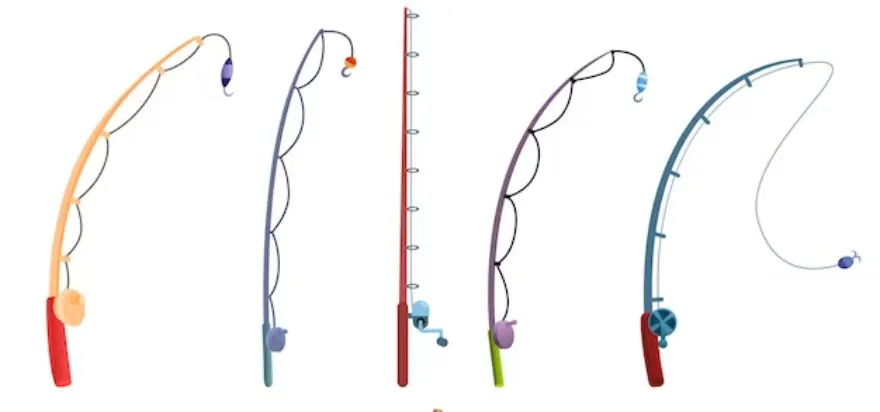The development of fishing braid lines is among the most noteworthy equipment developments in the history of fishing, which has seen significant evolution. Braid lines, in contrast to conventional monofilament or fluorocarbon lines, are made of many synthetic fibers, giving them unmatched strength and durability.
Advantages
Strength and Durability
Because braid lines have such a high tensile strength, they are perfect for larger fish species. Because of their toughness, they are resistant to wear and tear and won’t break easily.
Enhanced Sensitivity
Braided lines have a low stretch factor that increases sensitivity, enabling fishermen to feel even the smallest underwater bites and movements.
Reduced Visibility
Braid lines are less visible underwater than monofilament lines, which gives them a hidden edge while fishing in clear waters.
Best Fishing Braid Lines for Beginners
Polyethylene (PE) Braided Lines:
PE lines are well-known for their strength and longevity, and because of their high knot strength and ease of use, they’re great for beginners. They offer more line capacity on reels because of their smaller diameter in relation to their breaking strength.
Eight-Strand Braids:
These braids are made up of eight separate strands, which provide a smoother surface and less friction, increasing casting distance. They are more accommodating to beginners because they are less likely to develop wind knots.
Color-Coded Lines:
Certain braided lines have color changes every ten yards or so, which help with depth inspection and provide visual signals for improved control. This feature helps beginners in developing their fishing skills and teaching them about depth.
Low-Diameter Lines:
Using thinner braids can help when fishing in clear conditions because they can diminish visibility in the water and increase casting distance.
Intermediate to High Visibility Lines:
Although low visibility lines have their benefits, beginner anglers may find that lines with intermediate visibility are better since they are simpler to follow on the surface of the water, making it easier for them to watch line movements and identify bites.
Smooth and Round Braids:
Smooth and round profiles make braids cast more smoothly and lessen tangling and backlashes. For beginners who are still learning how to cast, this tool can be helpful.
Simple-to-Tie Knots:
Certain braided lines are made to make tying knots simpler, which is advantageous for beginners who are still learning the different knots needed for fishing.
Abrasion Resistance:
To ensure that your braids can withstand tough underwater structures, choose for braids with strong abrasion resistance. For beginners who do not yet have a good sense for avoiding barriers, this feature can help avoid frequent line breaks.
Choosing the Right Braid Lines
When choosing a fishing braid, take into account the strength-to-diameter ratio of the targeted fish, whether you want a line that is more visible for tracking or less visible in clear waters, and make sure it fits the capacity of your reel. Seek for circular, silky braids that are resistant to damage and have strong knot-tying qualities.
Comparative Analysis with Other Fishing Lines
There are various ways in which fishing braid lines differ from fluorocarbon and monofilament lines. Braided lines result in thinner lines with higher strength because they have better strength-to-diameter ratios. Their low stretch improves their sensitivity and hook-setting skills. Braids are more durable and less sensitive to damage than monofilament. However, in clear water, they might be easier to see. Although fluorocarbon lines are less sensitive and have a shorter casting distance than braided, they are more invisible. By being aware of these variations, anglers can choose lines that best suit their preferences and style of fishing as well as certain fishing situations.
Innovations in Fishing Lines
New materials such as thermally fused lines, which increase strength and decrease diameter, are the center of recent advancements in fishing lines. Smoother coatings are being used by manufacturers to refine braiding, resulting in longer cast times and lower friction. Precision in color-coding for bite detection and depth estimate has increased. Certain lines incorporate technology that offers enhanced resistance to abrasion or UV protection. Moreover, eco-friendly materials are highlighted in novel braiding, answering worries about their impact on the environment. With these changes, fishermen should be able to fish in a variety of circumstances with improved performance, durability, and versatility.
Conclusion
Fishing braid lines present a compelling choice for anglers due to their strength, sensitivity, and durability. Their thin diameter-to-strength ratio enhances casting distance and allows for increased line capacity. Innovations in materials and coatings continue to improve their performance, offering smoother casts and reduced friction. While they may be more visible in clear water, their abrasion resistance and minimal stretch make them ideal for various fishing conditions. Understanding the nuances between different braids and their applications empowers anglers to select lines that match their preferences and fishing styles, ultimately enhancing their overall fishing experience.


